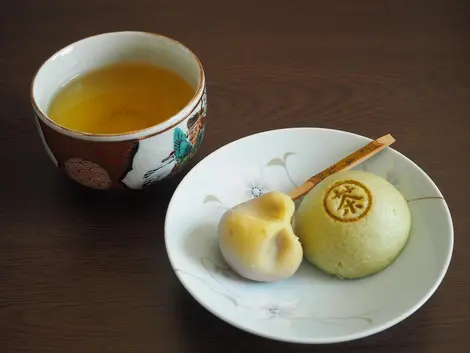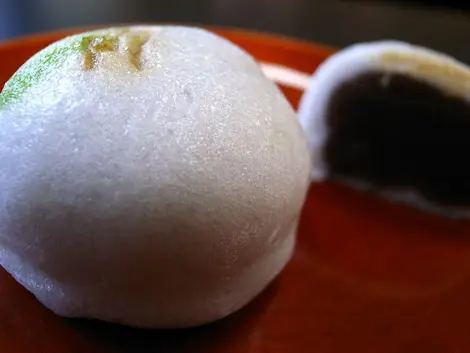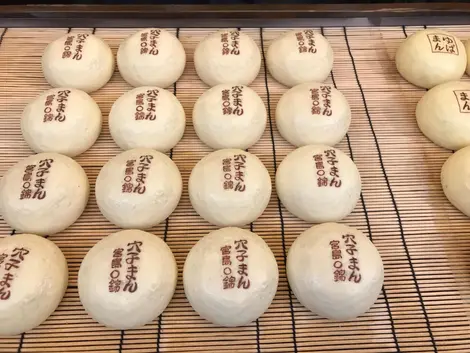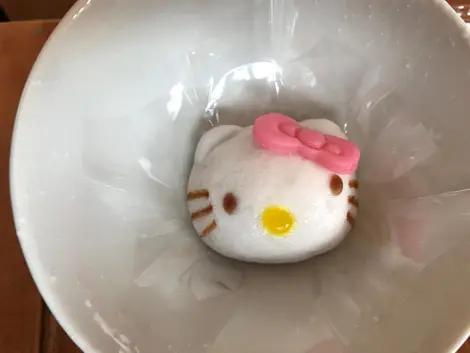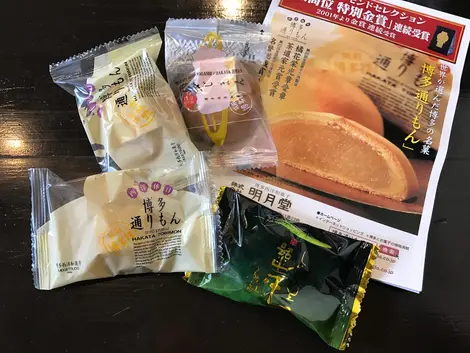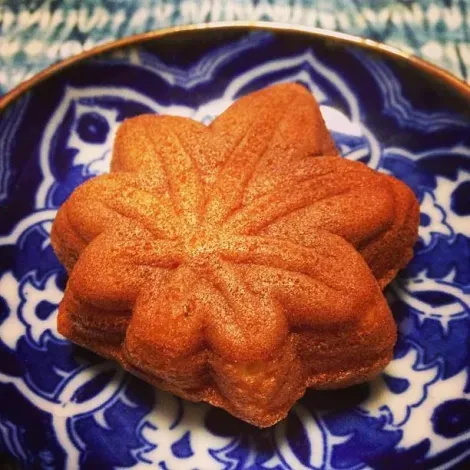The manju
Small cake for big manj(u)ers
Manju is a very popular confectionery throughout Japan. It is available in hundreds of different versions.
Manju is a wagashi , a term that refers to traditional Japanese sweets.
What is manju?
Because it is one of the cheapest pastries in Japan, it is eaten a lot, especially with tea or as a snack. Generically, it is a round or oval small cake filled with red bean paste ( anko ), whose casing is made of wheat flour, rice and/or buckwheat. It's a bit like the cousin of mochi (same concept), except that its dough has the texture of a cake, unlike that of mochi which is elastic.
To read: The azuki
Traditionally, manju is steamed, but it can also be cooked and browned in the oven. The vast majority of manju are sweet. However, there are savory versions : stuffed with meat or fish. The latter can be found on street stalls or in konbini , and a little less in pastries, as is the case for sweet manju .
It would seem that the manju arrived in Japan as early as the 14th century, by means of a convoy returning from China. Indeed, its recipe derives from the Chinese "mantou", a bun made from steamed wheat, unfilled or stuffed with meat. In Japan, since Buddhism prohibited the consumption of meat at that time, the manju became mainly vegetarian.
To each his own manju!
It could be the challenge of a lifetime for a foodie to figure out how many different manju there are in Japan! Although they are traditionally filled with anko , there are now all kinds of fillings: dough made from white beans, chestnuts, or fruit.
In addition, their shape can also differ: round, oval, in the shape of small kawaii characters. It is normal to come across hundreds of variations of the manju depending on the patisseries, cities or regions, but also depending on the events or festivals , which can develop their own version.
The island of Miyajima , for example, is famous for its momiji manju . In the shape of a Japanese maple leaf , it is a small cake that delights tourists who come to admire the floating torii in Hiroshima Bay. Similarly, Mount Koya ( Koyasan ) also has its own red bean paste manju , the shape of which is reminiscent of the sacred stone Miroku, which is said to seem light to virtuous people and heavy to sinners.
Another illustration of this regional diversity : the Hakata torimon , typical of Fukuoka, is a round cake filled with a mixture of butter jam and white beans, the recipe of which is based on that of the traditional manju .
During Tsukimi , the Moon festival, you will find tsukimi manju in the shape of a rabbit (not to be confused with the mochi in the shape of the small animal symbol of the lunar star, also prepared for this festival).
And of course, another great opportunity to taste somewhat special manju will be the sakura season , during which several houses will prepare manju flavored with cherry blossom.






